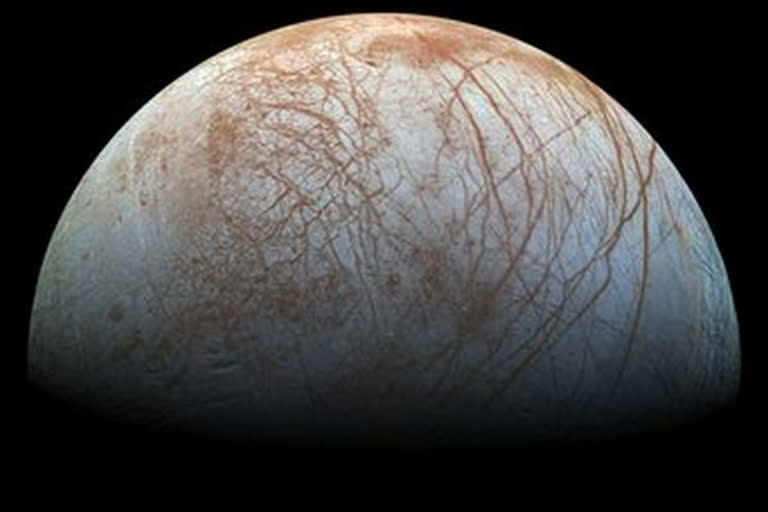Gottingen: A group of scientists, including researchers from the Max Planck Institute for Solar System Research (MPS) in Germany, have found new evidence of the presence of a plume of water near Jupiter's moon Europa.
During a flyby of Jupiter's moon Europa, which its fourth-largest moon, NASA's space probe Galileo may have also witnessed the same 20 years ago.
In computer simulations they strove to reproduce the data gathered by the onboard particle detector that was developed and built at MPS and in the USA.
This was only successful under the assumption that a water plume was involved. With its crust of frozen water and subsurface ocean, Europa has environmental conditions that could be favorable for simple forms of life.
Read |Moon mission: NASA seeks candidates for 8-month isolation
Water plumes would offer future missions to Jupiter the possibility of coming into direct contact with the moon's water reservoir.
A layered inner structure including a liquid iron core, a thin oxygen-rich atmosphere, an induced magnetic field -- Jupiter's fourth-largest moon, Europa, has greater resemblance with a planet than with a primitive moon.
Another special feature: the up to 18-kilometer thick outer crust of frozen water covers a subsurface ocean of water. With the new calculations by a group of researchers led by the European Space Agency (ESA) and MPS, there is now increasing evidence that the Jovian moon releases this water into space, at least occasionally, in cryovolcanic eruptions referred to as plumes.
Read |Historic US space launch a go after clean review
Neptune's moon Triton and Pluto's moon Charon are known to display similar behavior. And during NASA's Cassini mission, the onboard cameras took spectacular images of plumes ejected by Saturn's moon Enceladus, perhaps the most famous representative of cryovolcanism in the solar system.
Comparable and conclusive proof that also Europa spouts water into space is still missing.
"However, various theories, models, and sporadic observations suggest that Europa, too, can exhibit plumes," said MPS scientist Dr. Elias Roussos.
In recent years, researchers from several institutes in Europe and the USA have independently found evidence of a specific plume. Some of these groups evaluated data from the magnetometer onboard NASA's Galileo spacecraft, which from 1995 onwards spent eight years exploring the Jovian system.
